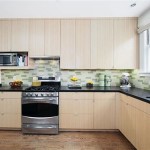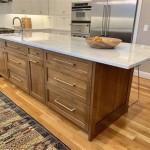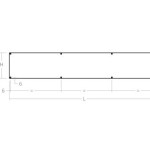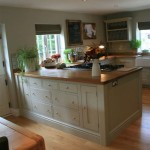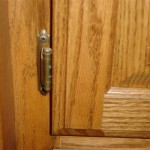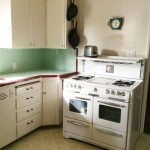Best Kitchen Wall Colors to Complement Honey Oak Cabinets
Honey oak cabinets are a classic and enduring feature in many kitchens. Their warm, golden tones provide a sense of comfort and familiarity. However, determining the ideal wall color to pair with honey oak can present a challenge. The right color can enhance the beauty of the wood, brighten the space, and create a cohesive and inviting atmosphere. The wrong choice, conversely, can result in a dated or visually unappealing kitchen.
This article explores several wall color options that effectively complement honey oak cabinets, offering insights into the principles of color theory and practical considerations for achieving a harmonious kitchen design. We will discuss the impact of undertones, the role of lighting, and the overall aesthetic goals one might have for their kitchen space.
Understanding Undertones and Color Harmony
A crucial aspect of selecting a wall color for a kitchen with honey oak cabinets is understanding undertones. Undertones are the subtle hues that lie beneath the surface color of a material. Honey oak, typically, possesses warm yellow or orange undertones. Choosing a wall color with complementary undertones is essential for creating a cohesive and balanced look. Avoiding clashes in undertones prevents the space from feeling disjointed or visually jarring. For instance, pairing honey oak with a cool-toned gray that has blue or purple undertones can create a conflict, making the cabinets appear overly yellow or even dated.
One successful strategy involves selecting wall colors with similar warm undertones to those found in the honey oak. This approach creates a harmonious and unified effect. Colors like warm creams, soft beiges, or even muted yellows can blend seamlessly with the cabinets, reinforcing the overall warmth of the kitchen. These options evoke a sense of comfort and timelessness.
Alternatively, a more contrasting approach can be equally effective. Using colors that offer a visual counterpoint to the warm tones of the oak can introduce depth and dimension to the kitchen. However, it is imperative to choose contrasting colors thoughtfully, considering the undertones and ensuring they do not clash with the wood's natural hue. For example, a muted sage green or a soft blue-gray, with a subtle warm undertone, can provide a refreshing contrast while still maintaining a sense of balance within the space.
It is also vital to consider the overall lighting in the kitchen. Natural light, artificial light, and the direction the room faces can all influence how a wall color appears. Colors tend to look different under different lighting conditions. Therefore, it is recommended to test paint samples on the walls and observe how they appear at various times of the day and under different lighting scenarios before making a final decision.
In addition to undertones, the overall color saturation and intensity play a significant role. A highly saturated or intensely bright color may overwhelm the warmth of the honey oak, while a more muted or subdued color can allow the cabinets to remain the focal point of the kitchen. Neutral colors, in general, offer a safe and versatile option for kitchens with honey oak cabinets, providing a backdrop that allows the natural beauty of the wood to shine through.
Neutral Color Palettes: Timeless Choices for Honey Oak
Neutral color palettes are often the go-to choice for kitchens with honey oak cabinets due to their versatility and ability to create a sense of spaciousness and light. These palettes include a range of colors from off-whites and creams to beiges, grays, and greiges (a blend of gray and beige). The key to success with neutral colors lies in selecting the right shade and undertone to complement the honey oak.
Off-white and cream shades with warm undertones are particularly effective in creating a cohesive and inviting kitchen. These colors reflect light well, making the space feel brighter and more open. They also blend seamlessly with the warm tones of the honey oak, creating a harmonious and unified effect. When choosing an off-white or cream, consider the overall style of the kitchen. A warmer cream can evoke a more traditional feel, while a cooler off-white can lend a more contemporary touch.
Beige colors offer another excellent option for kitchens with honey oak cabinets. Beige provides a slightly warmer and richer alternative to white, adding depth and dimension to the space. When selecting a beige, opt for shades with warm undertones, such as those with hints of yellow or gold. This will ensure that the wall color complements the honey oak rather than clashing with it. Avoid beiges with cool or pink undertones, as these can create a visual conflict.
Gray and greige colors have become increasingly popular in recent years, offering a more contemporary and sophisticated alternative to traditional beige and cream. However, choosing the right gray or greige for a kitchen with honey oak cabinets requires careful consideration. It is crucial to select shades with warm undertones, such as those with hints of beige or yellow. These warmer grays and greiges will complement the honey oak, creating a balanced and stylish look. Avoid cool grays with blue or purple undertones, as these can make the cabinets appear dated or overly yellow.
When working with neutral colors, it is important to consider the overall lighting in the kitchen. Neutral colors can look different under different lighting conditions, so it is recommended to test paint samples on the walls and observe how they appear at various times of the day and under different lighting scenarios. Additionally, using a variety of textures and finishes can add visual interest to a neutral color palette. For example, textured paint, tile backsplashes, or decorative accents can add depth and dimension to the kitchen.
Introducing Color: Complementary and Contrasting Options
While neutral color palettes offer a safe and versatile option for kitchens with honey oak cabinets, introducing color can add personality and vibrancy to the space. When choosing a color, it is essential to consider its relationship to the honey oak and the overall aesthetic goals for the kitchen. Both complementary and contrasting color schemes can be effective, depending on the desired effect.
Complementary colors are those that are located opposite each other on the color wheel. In the case of honey oak, which has warm yellow and orange undertones, complementary colors include blues, purples, and greens. However, using these colors effectively requires careful consideration of their saturation and intensity. A highly saturated or intensely bright complementary color can overwhelm the warmth of the honey oak, while a more muted or subdued color can create a balanced and harmonious look.
Muted sage green, for example, offers a refreshing and natural complement to honey oak cabinets. The green provides a calming and earthy feel, while its muted tone prevents it from overpowering the warmth of the wood. Similarly, a soft blue-gray with a subtle warm undertone can create a sophisticated and elegant look. The blue-gray provides a cool contrast to the honey oak, while its warm undertone ensures that it does not clash with the wood's natural hue.
Alternatively, a contrasting color scheme can be used to create a more dramatic effect. Contrasting colors are those that are located further apart on the color wheel. In the case of honey oak, contrasting colors might include deep blues, rich greens, or even warm reds. However, using contrasting colors effectively requires careful consideration of their intensity and saturation. It is generally best to use contrasting colors sparingly, as accent colors or focal points, rather than painting the entire kitchen in a bold, contrasting hue.
For example, a deep navy blue accent wall can provide a striking contrast to honey oak cabinets, adding depth and drama to the kitchen. Alternatively, a warm red backsplash can create a focal point behind the stove, adding a touch of energy and excitement to the space. When using contrasting colors, it is important to balance them with neutral elements, such as white countertops or light-colored flooring, to prevent the kitchen from feeling overwhelming or visually jarring.
Ultimately, the best wall color for a kitchen with honey oak cabinets depends on the individual's personal preferences and the overall style of the kitchen. However, by understanding the principles of color theory, considering the undertones of the honey oak, and experimenting with different color palettes, it is possible to create a kitchen that is both beautiful and functional.

Paint Colors To Go With Honey Oak Trim Cabinets West Magnolia Charm

Wall Colors For Honey Oak Cabinets Kitchen Paint

Wall Colors For Honey Oak Cabinets Paint Kitchen Walls Color

The Best Kitchen Paint Colors With Honey Oak Cabinets And Trim Lantern Lane Designs

The Best Wall Paint Colors To Go With Honey Oak True Design House

Wall Colors For Honey Oak Cabinets Love Remodeled

The Best Kitchen Paint Colors With Honey Oak Cabinets And Trim Lantern Lane Designs

What Kitchen Color Schemes Work With Oak Cabinets The Homes I Have Made

Paint Colors That Go With Honey Oak Cool Spaces

Wall Colors For Honey Oak Cabinets Love Remodeled
Related Posts

